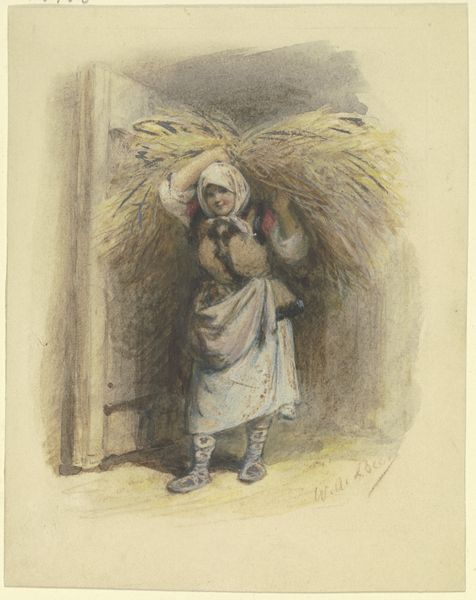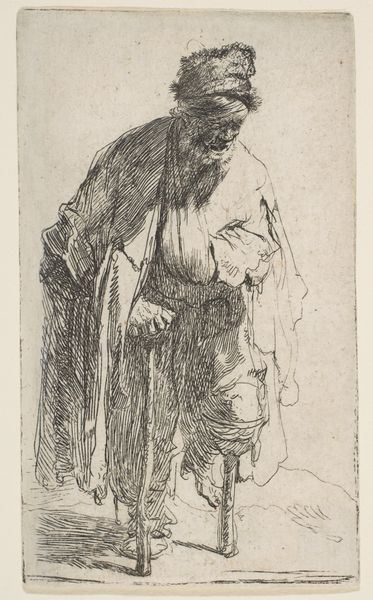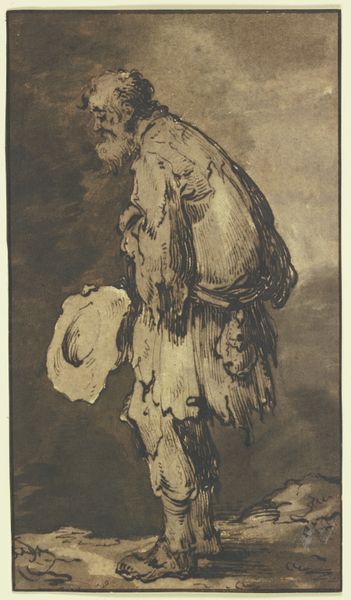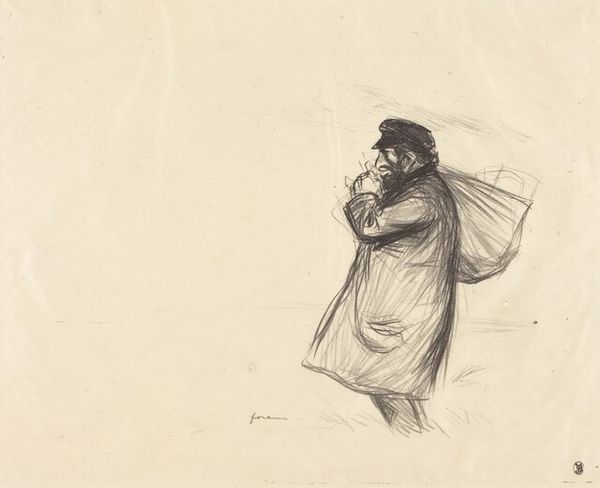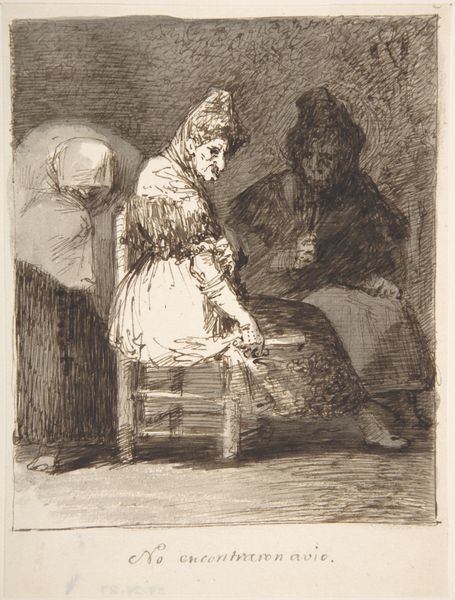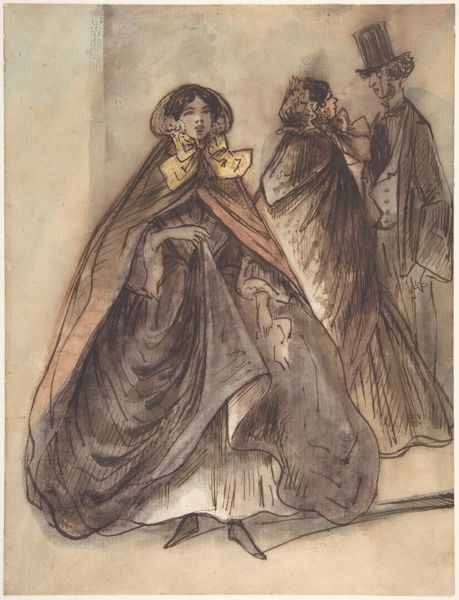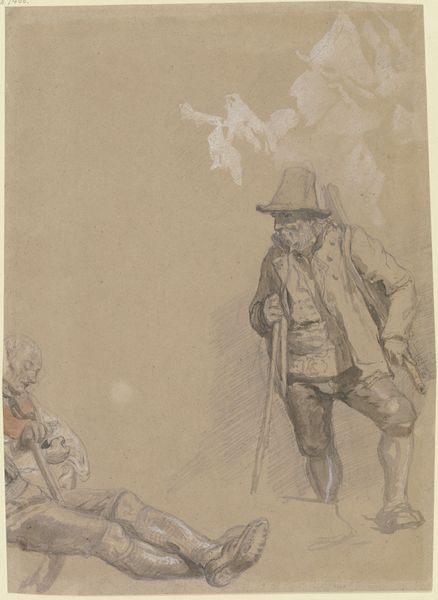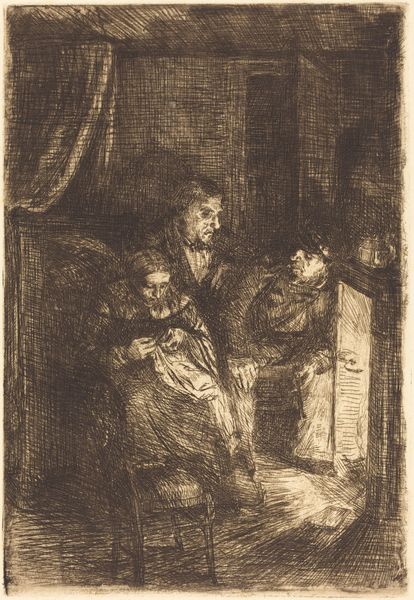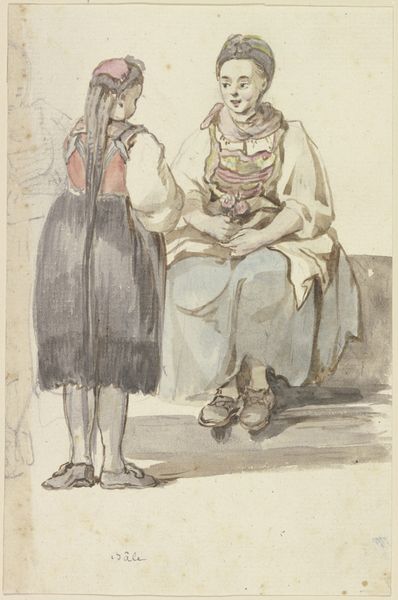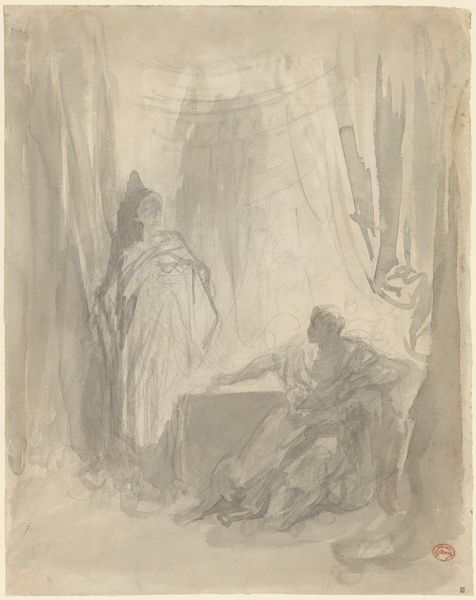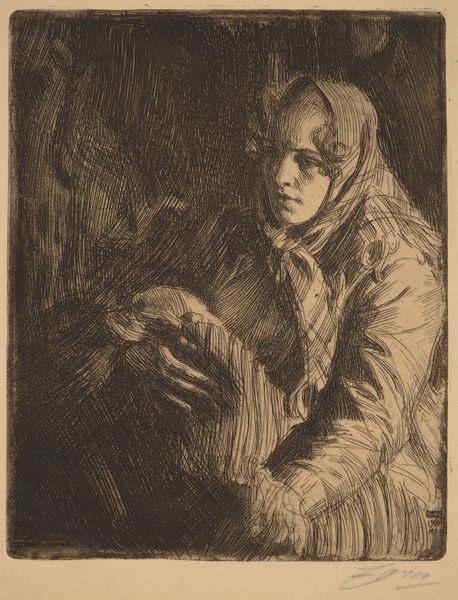
watercolor
#
portrait
#
watercolor
#
russian-avant-garde
#
genre-painting
Dimensions: 14 3/4 x 10 9/16 in. (37.5 x 26.8 cm)
Copyright: Public Domain
Curator: Here we have Klavdy Lebedev's "Two Russian Men," a watercolor piece from 1904 now residing here at the Metropolitan Museum of Art. It hits me with this stark rawness. There's a sort of burdened resignation in the man's face. What’s your first take? Editor: It looks damp. Beyond the expressions, the rendering of the figures screams process, and material--I notice how much the paper dictates the forms through its subtle grain and how the pooling of the watercolor seems utterly vital. I wonder if this work was made quickly. Curator: Speed absolutely feels like a component. Maybe trying to capture something fleeting? There’s almost a ghostliness to the figure in the back, just hinted at with these dark, loose washes. Editor: Right, that kind of spectral depiction also points to the materiality of pigments. Here it makes me ask: What kind of colors did Lebedev have available to him? Was this ochre palette tied to economics? And what's the support--some type of laid paper perhaps, given the prominent texture? Curator: That brings up questions about Russian society at the turn of the century. Were these two men from a particular class? The details in the clothing of the forward man give a sense of, well, not wealth, but certainly some level of practicality. That fur collar is very suggestive of warmth, comfort. Editor: The details certainly speak to class, like that worn vessel in his hands. Is it metal, maybe? A humble bowl or container suggests hard labor, the kind tied to peasantry or urban workers. This aligns with genre painting focused on ordinary life. Curator: I see the melancholy, the kind that hangs heavy, especially around the eyes of the man. The slump of the shoulders… and this creates a bridge, doesn’t it, between their struggles then and maybe echoes of it now? I keep looking at those hands wrapped around the…vessel. Editor: It’s really about that central, physical act—the very act of making things by hand that I find moving. It underscores how material conditions deeply influenced people’s realities and perceptions in Lebedev's time. Curator: It's haunting to imagine how our world has been molded, materially and emotionally, over and over again. The sadness and the grit here speak across time, reminding us that some strains never quite vanish.
Comments
No comments
Be the first to comment and join the conversation on the ultimate creative platform.
